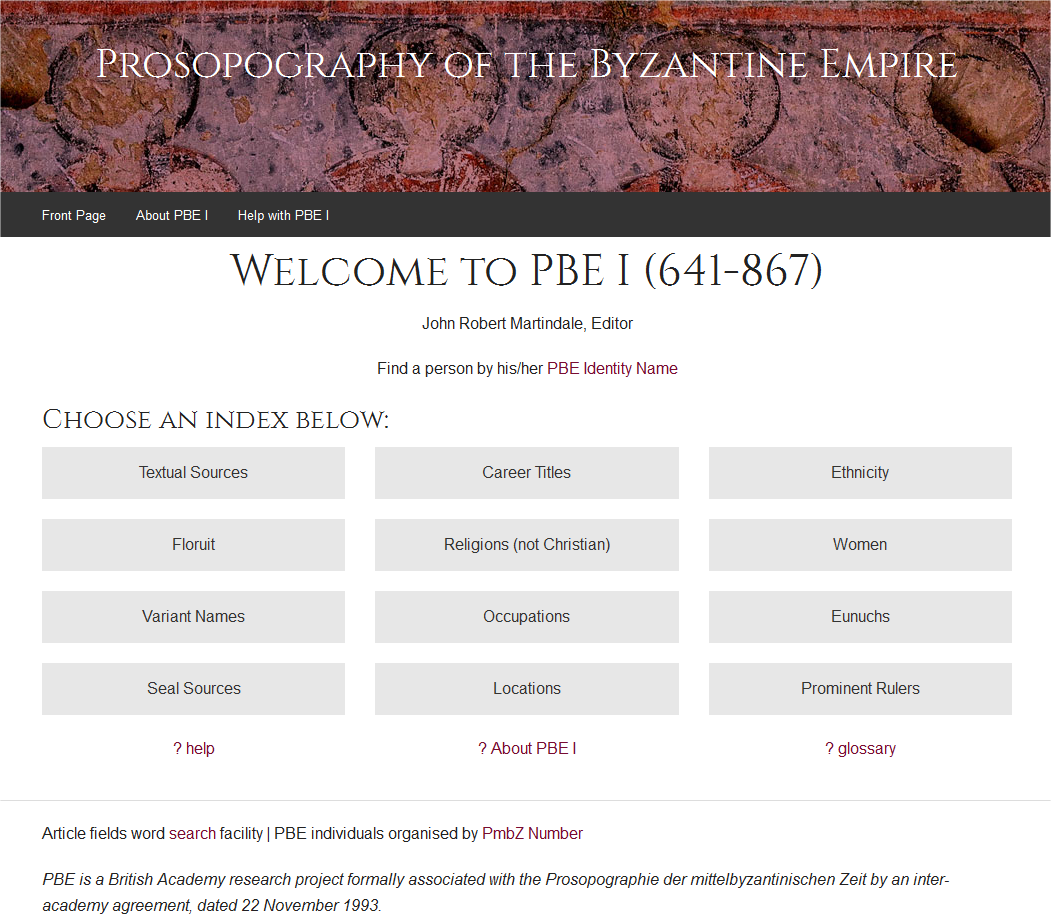
Using the PBE I website: Introduction
This section of the website largely duplicates the information printed in the booklet that was originally enclosed with the PBE CD. It explains how the information is organised and how best to access it for the kinds of information you require. The Dataset Index Home Page When using the PBE collection, you will frequently return to the Dataset Index Home Page. Think of it as home-base - from this page you are able to access all of the areas of the website:
The elements that make up a biographical entry for PBE I are as follows. Immediately beneath the identifying identity name, there are a series of tabular entries dealing with the sex of the individual, a floruit [given in the broad categories of 'Early', 'Middle' or 'Late' (or combinations) with the century written in Roman numerals], the first and last dates known [given as a three digit number of the Common Era] followed by the 'type' of the date in brackets ['n.' {for natus, born}, 'taq' {for terminus ante quem}, 'tpq' {terminus post quem}, 'c.' {circa}, or 'ob.' {obit}], and various other categories of information by which the data set is indexed if there is data present under those headings. The information presented in the articles [the basic biographical accounts] is generally in the form of a piece of information followed by the source-citation. Where interpretation hinges on the Greek, the original source is quoted after the basic piece of information. Examples of this are: all titles, names of jobs, names of interpersonal relationships, anything that could be construed as a technical term.
Use the Help Index on the left to access additional Help resources, or use the Back button on your browser to return to the previous page.